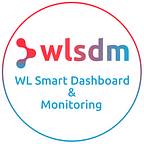WLSDM: How to monitor applications’ database statements (JDBC SQL) and performance on Oracle WebLogic Server?
In this post, you will learn the easiest way of monitoring high level applications’ database statements (JDBC) performance via WLSDM Back-End system monitoring features.
If your application has slow JDBC execute statements then these statements need to be tuned by DBA or developer. A WebLogic administrator has to be report these slow JDBC SQL statements continuously. Because, in production environments deployments never stops. In this case, WLSDM able to monitor JDBC SQL statements continuously and notifies you when slow SQL statements occurs. Receive fancy HTML alert emails covering all the problematic SQL statements as an attachment for the given back-end threshold.
Let’s make some practice and learn how WLSDM back-end system monitoring helps you to facilitate monitoring Database JDBC SQL Statement on WebLogic Server…
Monitoring JDBC SQL Queries on WebLogic Server
1. Go to “Monitoring & Diagnostics > Back-end Systems > JDBC” page.
2. Monitor latest JDBC events in this page. Then click “Chart Options” icon.
3. Switch “List” tab for the detailed view to Monitor JDBC queries. You can use full screen icon to maximize the grid list.
4. Click “Detail” button in grid to view detailed SQL queries and durations as below.
5. JDBC dashboard view is configurable. For the customization open “Page Operations” menu.
Back-end Notification Settings:
6. Go to “Configuration” > Monitoring & Diagnostics > Back-end Systems (tab)” page. You can edit default back-end monitoring settings by clicking edit button in the list or you can add new back-end monitoring by clicking “Page Operations > New Back-end Systems Monitoring” option. Take below screen-capture as a reference.
7. Add back-end events and set alarm threshold as below.
8. For test purpose and tutorial we use “Java Server Loader (JSL)” to create problematic Oracle Database JDBC transactions on WebLogic Server which is;
call DBMS_LOCK.SLEEP(10)This Oracle Database SQL statement will took 10 seconds then WLSDM will catch it and notify us by HTML Email, Web Push Notification, Responsive UI notification page... etc.
9. Voilaaa! Click “WLSDM: BACK-END SYSTEMS” Web push notification to see the real time notification.
10. WLSDM will redirect you to back-end notification page when you click web push notification box. Check back-end threshold value, catch count and JDBC SQL query duration in the notification page and detail modal window.
11. Check WLSDM back-end email notification. Really robust with its attachments.
Watch and Learn! How to monitor applications’ database statements (JDBC SQL) and performance on Oracle WebLogic Server
